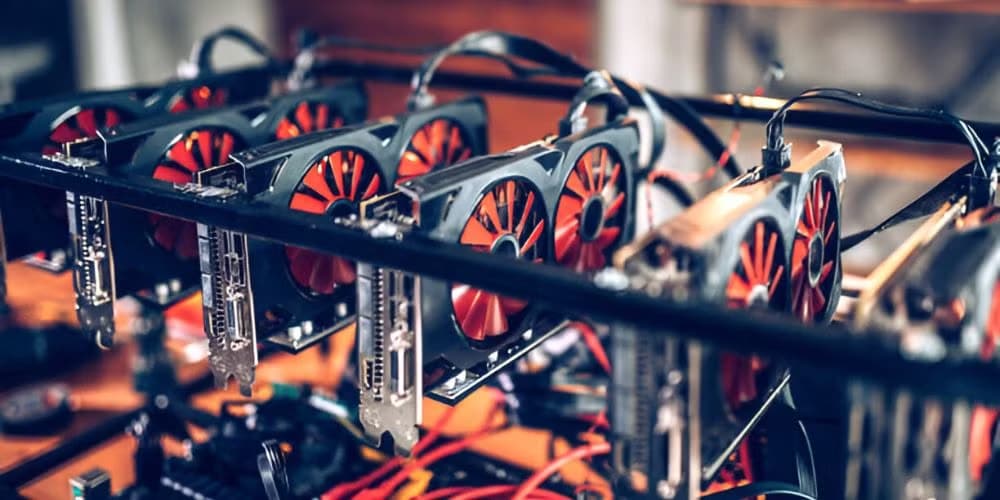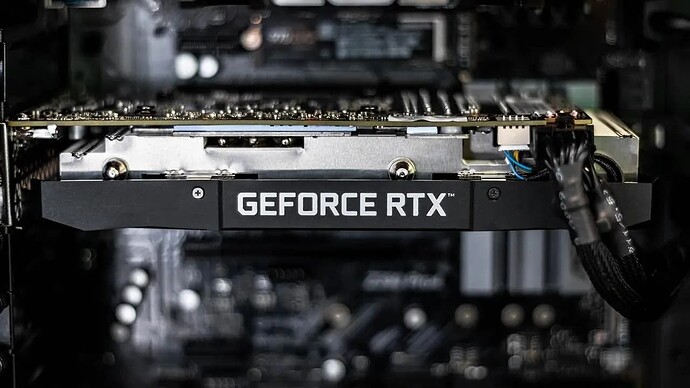As technology continues to advance, the demands placed on graphics processing units (GPUs) in graphic rendering become increasingly complex. The year 2025 presents a unique landscape where high-quality visuals, real-time rendering, and immersive experiences require GPUs that are not only powerful but also efficient. Understanding which GPU specifications matter most for graphic rendering is crucial for artists, developers, and anyone involved in the graphics industry.
The Role of GPUs in Graphic Rendering
GPUs are specialized hardware designed to accelerate the rendering of images, animations, and 3D graphics. Unlike traditional CPUs, which are general-purpose processors, GPUs excel at handling parallel processing tasks, making them ideal for rendering graphics. As software and content become more sophisticated, the role of GPUs becomes even more vital, influencing everything from video games to virtual reality and professional design applications.
Key GPU Specifications
When evaluating GPUs for graphic rendering, several specifications come into play. Each of these specifications contributes to the overall performance and efficiency of a GPU in rendering tasks.
1. CUDA Cores and Stream Processors
CUDA cores for NVIDIA GPUs and stream processors for AMD GPUs are fundamental to parallel processing capabilities. These cores are responsible for executing the calculations needed for rendering graphics. The more cores a GPU has, the better it can handle complex tasks simultaneously.
- Why It Matters: Higher numbers of CUDA cores or stream processors lead to improved performance in rendering tasks, allowing for faster processing of complex scenes and higher frame rates in real-time applications.
2. Clock Speed
Clock speed, measured in megahertz (MHz) or gigahertz (GHz), indicates how fast a GPU can execute instructions. Higher clock speeds generally translate to better performance, especially in tasks that require quick calculations.
- Why It Matters: While the number of cores is crucial, clock speed can enhance the performance of each core, leading to quicker rendering times and improved responsiveness in applications.
3. Memory (VRAM)
Video RAM (VRAM) is critical for storing textures, models, and other graphical data that a GPU needs to access quickly. The amount of VRAM significantly affects a GPU’s ability to handle high-resolution textures and complex scenes.
- Why It Matters: As resolutions increase and more detailed textures become common, having sufficient VRAM is essential. For 2025, a minimum of 8 GB of VRAM is recommended for most graphic rendering tasks, with 12 GB or more being ideal for demanding applications like AAA games or professional 3D rendering.
4. Memory Bandwidth
Memory bandwidth refers to the amount of data that can be transferred to and from the GPU’s memory in a given time. It is influenced by the memory type (e.g., GDDR6, GDDR6X) and the memory interface width (e.g., 256-bit, 384-bit).
- Why It Matters: Higher memory bandwidth allows for quicker access to data, which is crucial when rendering large textures or complex scenes. A GPU with higher bandwidth can significantly reduce bottlenecks during rendering processes.
5. Ray Tracing and Tensor Cores
Ray tracing is a rendering technique that simulates the way light interacts with objects to create realistic lighting, shadows, and reflections. Specialized cores, such as NVIDIA’s RT cores and Tensor cores, enhance ray tracing performance and enable AI-driven features.
- Why It Matters: As ray tracing becomes more prevalent in games and visual applications, having a GPU that supports these technologies is essential for achieving high-quality visuals. Tensor cores are particularly beneficial for AI tasks, such as denoising images in real-time rendering.
6. Power Efficiency
Power efficiency, measured in terms of performance per watt, is increasingly important as the industry shifts towards more sustainable practices. Efficient GPUs consume less power while delivering high performance, which is vital for both desktop and mobile platforms.
- Why It Matters: GPUs that offer better power efficiency reduce energy consumption and heat generation, leading to quieter and more reliable systems. This is especially important in mobile devices and laptops, where battery life is a concern.
7. Cooling Solutions
Effective cooling solutions are necessary to maintain optimal GPU performance, especially during intensive rendering tasks. Modern GPUs come with various cooling technologies, including dual-fan designs, liquid cooling, and advanced thermal management systems.
- Why It Matters: Overheating can throttle GPU performance and lead to system instability. A well-cooled GPU ensures consistent performance during long rendering sessions, making it crucial for professionals who rely on their hardware.
8. Compatibility and Connectivity
Compatibility with existing systems and the ability to connect to various displays and peripherals are important considerations. Modern GPUs should support the latest standards, such as PCIe 4.0 or 5.0, and connectivity options like HDMI 2.1 and DisplayPort 1.4.
- Why It Matters: Compatibility ensures that the GPU can work effectively with the rest of the system, while modern connectivity options allow for higher resolutions and refresh rates, enhancing the overall visual experience.
Emerging Trends in GPU Technology
The landscape of GPU technology continues to evolve rapidly, influenced by trends in gaming, artificial intelligence, and virtual reality. Understanding these trends can help users make informed decisions about GPU specifications.
1. AI-Driven Rendering
Artificial intelligence is becoming an integral part of graphic rendering. AI-driven techniques, such as neural rendering and procedural generation, are changing how graphics are created and rendered. GPUs with Tensor cores are particularly suited for these tasks.
- Future Implications: As AI becomes more prevalent, GPUs that can efficiently handle AI workloads will provide a significant advantage in rendering tasks. This capability may lead to faster rendering times and improved visual quality.
2. Real-Time Ray Tracing
Real-time ray tracing is set to become the standard for achieving cinematic-quality visuals in games and applications. As more titles adopt this technology, GPUs will need to support advanced ray tracing features to deliver smooth performance.
- Future Implications: GPUs capable of real-time ray tracing will be essential for developers aiming to create visually stunning experiences. As ray tracing technology matures, performance optimizations will be critical for maintaining high frame rates.
3. Increased Demand for 4K and Beyond
As display technology advances, the demand for 4K and even 8K rendering is increasing. GPUs will need to provide the necessary power to handle these resolutions while maintaining performance.
- Future Implications: A GPU with ample VRAM and high memory bandwidth will be essential for rendering at these higher resolutions. The ability to efficiently manage large textures and complex scenes will become a critical factor in GPU selection.
4. Virtual and Augmented Reality
VR and AR applications require high-performance GPUs to deliver immersive experiences. Low latency and high frame rates are crucial to prevent motion sickness and ensure user comfort.
- Future Implications: GPUs optimized for VR and AR will become increasingly important as these technologies gain traction. Features such as support for variable rate shading and foveated rendering will enhance performance in virtual environments.
5. Sustainability and Eco-Friendly Design
As the industry shifts towards sustainability, manufacturers are focusing on creating more energy-efficient GPUs. This trend includes using eco-friendly materials and designing GPUs that consume less power without sacrificing performance.
- Future Implications: Consumers will increasingly prioritize energy-efficient GPUs, leading manufacturers to innovate in this area. Sustainable practices may also influence purchasing decisions, especially among environmentally conscious users.
Choosing the Right GPU for Graphic Rendering
Selecting the right GPU for graphic rendering in 2025 requires careful consideration of specific needs and use cases. Here are some key factors to guide the decision-making process:
1. Identify Use Cases
Understanding the primary use cases for which the GPU will be employed is essential. Are you focused on gaming, professional design, video editing, or AI-driven tasks? Identifying specific needs will help narrow down the options.
2. Balance Performance and Budget
Balancing performance with budget constraints is critical. High-end GPUs offer exceptional performance but can be prohibitively expensive. Determine the budget and find a GPU that provides the best performance within that range.
3. Future-Proofing
Investing in a GPU that can handle future technologies and applications is wise. Look for features that will remain relevant for several years, such as support for ray tracing, AI capabilities, and high VRAM.
4. Consider System Compatibility
Ensure that the chosen GPU is compatible with existing hardware. Check the power supply requirements, motherboard compatibility, and physical space within the case to ensure a smooth installation.
5. Read Reviews and Benchmarks
Before making a purchase, read reviews and benchmarks to gauge the performance of potential GPUs in real-world scenarios. User experiences and expert opinions can provide valuable insights into the strengths and weaknesses of different models.
Wrap up
As the graphic rendering landscape evolves in 2025, the specifications of GPUs will play a crucial role in determining performance, efficiency, and visual quality. Understanding the key GPU specifications—such as CUDA cores, VRAM, clock speed, and ray tracing capabilities—will enable users to make informed decisions that align with their rendering needs.
The future of graphic rendering lies in the intersection of advanced hardware and innovative software technologies. As trends such as AI-driven rendering, real-time ray tracing, and increased demand for high-resolution content continue to shape the industry, selecting a GPU that can keep pace with these developments is essential.
Investing in the right GPU not only enhances rendering capabilities but also ensures a more enjoyable and productive experience for artists, developers, and gamers alike. By staying informed about emerging trends and understanding the importance of key specifications, users can navigate the dynamic world of graphic rendering with confidence. Ultimately, the right GPU will empower individuals to bring their creative visions to life, setting the stage for a new era of visual experiences.


